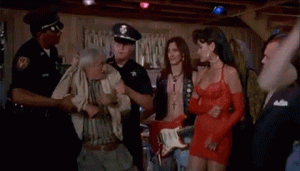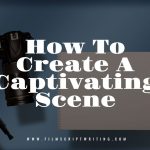Exposition Through Dialogue
One purpose of dialogue is to communicate the backstory, background information and any facts that are necessary to the story. This is known as exposition through dialogue. It is all too easy to lump the majority of the exposition in the first few pages of your script but this gets the story off to a slow start from which it may not recover. It also lessens the opportunity for shocking revelations and plot twists towards the end of your screenplay.
This means that you need to spread your exposition evenly throughout your screenplay. One of the best ways to do this is to include all the exposition necessary for the audience to understand the story…but no more. Anything that isn’t required to understand the story right away you can save for later on down the line.
One of the biggest strengths of the X-Files franchise was its ability to give enough information to the viewer to understand the story, while keeping them in the dark about things they didn’t need to know. This allowed the audience to empathize with Mulder and Scully as the story progressed and more dark secrets were revealed.
Saving exposition until crucial moments is a fantastic way to keep the story exciting. It keeps the audience guessing and doesn’t allow the script to become predictable.
It can be hard to keep exposition natural. That is, keeping the dialogue sounding like a real conversation. You want to avoid dialogue that just gives the game away while standing out like a sore thumb.
People just don’t talk like that and neither should your characters. This is where you can use the scriptwriters tool of conflict to add realism. Have your characters argue over backstory. Every character has their own point of view, his extends to the past as well as the present.Not too convincing is it?
It is also possible to add exposition in scenes without using dialogue. You can pass information over visually. Throughout a movie you character could wear a wedding ring and have pictures of himself with a woman and child in his wallet and in his house. Yet you never see this family in person. The audience will surmise that the character has been through a divorce but still think of their ex-wife and child with fondness.
Using Flashback For Exposition
Flashbacks are often used in poor scripts as a cheap and easy way of introducing exposition. Rather that spoon feeding the information to the audience, flashbacks tend to scoop the exposition out in big dollops, failing to hold the interest of the audience and failing to move the story forward.
If you do choose to use a flashback then you have to be careful about the way you use it otherwise it may appear amateurish. When thinking of using a flashback you need to make sure it’ll meet this checklist:
 It’ll move the story forward.
It’ll move the story forward.- It motivates the character.
- The audience already cares about what happens in the future.
- It’s short and to the point.
- It transitions well.
If the flashback doesn’t contain an event which currently motivates the character in the present then there is no point in showing it. Similarly there’s no point in a flashback if the audience hasn’t been given enough to care about what will happen in the future, the flashback will merely serve as an interruption to this goal.
Flashbacks are a lot more effective when they are transitioned well from the present story. Something about the scene should trigger a character’s flashback otherwise there’s no reason a flashback should happen. It could be a sound, visual image, a place, a name, anything that could conceivably make a character think about the past.
As a rule exposition through dialogue is best told through natural dialogue. However a flashback, when handled correctly, can also be highly effective.
Please CLICK HERE To Check Out My Top 5 Online Script Writing Courses


